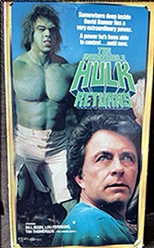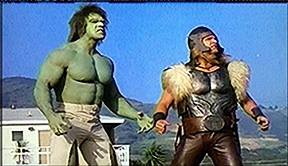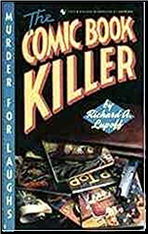REVIEWED BY DAVID VINEYARD:

JUANJO GUARNIDO & JUAN DIAZ CANALES – Blacksad. Dark Horse Comics. hardcover, 2010. Contains the first three stories: “Somewhere Within the Shadows,” “Arctic Nation” and “Red Soul.” Other albums are “Blacksad: A Silent Hell” and “Blacksad: Amarillo.” Originally published in Spanish.
There are mornings when you have trouble digesting your breakfast, especially when you find yourself in front of the dead body of an old flame, the remains of a beautiful dream.
So opens the first adventure of John Blacksad, private eye in 1950’s New York and America. John Blacksad, the best new eye of this millennium for my money, a tough but compassionate man with the soul and voice of Philip Marlowe, the vengeful spirit of Mike Hammer, and the sheer cool of Peter Gunn, all wrapped up in the most fascinating private eye in decades. He is one cool cat, John Blacksad.

A cool black cat. Literally. John Blacksad is an anthropromorphic cat in a world of anthropromorhic animals; racist polar bears, tough police dog cops named Smirnov, sadistic millionaire frogs (Ivo Statoc), a wisecracking fox newsman named Weekly (for how often he changes his underwear), serpent and rat assassins, you name it. It will probably come as no surprise that Blacksad’s creator Juanjo Guarnido is a Spanish Disney animator who worked on Zootopia, but this is no Disney cartoon.

John Blacksad operates in Mean Streets as tough as any Raymond Chandler ever portrayed and in a world as corrupt. He would be at home in Black Mask if the pulp paper could have supported the lush drawings and beautiful coloring that marks the graphic novels. Frankly, in story terms, he wouldn’t suffer all that much as a prose hero, though those handsome graphics are impossible to underestimate in terms of impact.
“Somewhere Within the Shadows†is the defining adventure, the origin of a sorts, Guarnido and Canales’ I, The Jury, John Blacksad’s mission statement. It opens with Blacksad summoned to the home of star dancer Natalia, an old flame, who has been found brutally murdered. Police dog cop Smirnov warns him off, but knows Blacksad won’t be stopped, and as Blacksad, who once protected Natalia from a stalker and was briefly her lover learns her love life was complicated. Complicated, and dangerous as a pair of killers, a knife wielding snake and a rat soon prove.

Wounded, worked over, Blacksad isn’t about to stop, and when Smirnov comes to tell him the department has been ordered to lay off the case he surprises the private eye. A brutal and sadistic killer is trying to buy his way out of two murders, Natalia and another lover, a writer. Smirnov may be a cop but he won’t stand by and watch that happen. It’s an open invitation, find the killer and stop him and the Department will look the other way.
Shades of Pat Chambers and Mike Hammer.
Blacksad does find the killer and also his purpose in life. To avenge the helpless and take on the powerful and corrupt, but not before brief snapshots of various characters in the city (a walrus talent agent is memorable as is a literal gorilla bodyguard), and a surprising moment with a dying assassin in his office.

The violence, when it comes, is cathartic, but there is far more to this, including rich humor and good storytelling. Blacksad owes something to Will Eisner and his famed Spirit, to whom Blacksad is a spiritual cousin visually and story wise.
And so it begins.
In “Arctic Nation†a missing little girl puts Blacksad in the middle of a series of brutal murders of black animals and against a Klan/Nazi like group of white animals called Arctic Nation. This is the one where he meets Weekly, his sidekick and eventually pal. “Red Soul†introduces a new female interest who will also become a regular.

Private eyes have been around for a while in comics, before Superman, Joe Shuster and Jerry Siegel had Slam Bradley. Dan Turner had a long comic book run, and at various times tough PI’s like Ken Shannon and Sam Hill had runs in their own titles, Black Canary was even a private eye in her secret identity at one point. Most famously Mickey Spillane debuted Mike Hammer as the failed comic book hero Mike Danger.
For the most part the two haven’t been as compatible as you might expect, even though there is a Golden Age adaptation of The Maltese Falcon. Some have done more with the genre than others, and likely the best was DC Comics Nathaniel Dusk by writer Don MacGreggor (who earlier created the independent Detectives Inc.) and artist Gene Golan, a visual and literary high mark for the private eye in comic book form. More recently there was a well done adaptation of Raymond Chandler’s The Little Sister done in black and white.

But Blacksad is far and away the most successful of these attempts in terms of success with his audience. Somehow the anthropromorphic animals capture an aspect of the film noir universe that mere humans missed in this format. It’s as if Carl Barks of the brilliant Disney comics many of us grew up on had collaborated with Herge of the Tintin albums and added Robert B. Parker on the script. Shadows of Sydney Greenstreet, Peter Lorre, Clifton Webb, George Sanders, Bogie, and Bacall appear in these pages transformed into their animal archtypes. The Blacksad saga turns everything you think you know about comics on its head, you have to see it to believe it, but don’t just look at the stunning visuals, Juan Diego Canales’ scripts and lyrical narrative are just as important.
I’ll be surprised at anyone who loves private eyes, femme fatales, noir streets, or hard boiled tales isn’t taken by this no matter how much they may dislike or disdain comic books. Blacksad manages the neat trick of being both a paean to something nostalgic and itself entirely original and unique. No one is going to match this for a long time.






